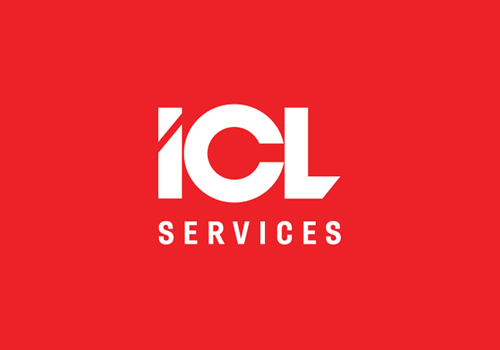News
14 July 2022
News
Готово!
Скоро материал придет на указанную электронную почту. Также подписывайте на нас в Facebook
Ok
Virtualization: an Efficient Way to Create IT Infrastructure
In 2021, analysts estimated the global market for virtualization solutions at USD 68 bn. By 2027, it is expected to reach USD 110.42 bn. This growth will be driven by the advantages of virtualization for data storage, the development of cloud services, efficient and convenient management of IT infrastructure and its components, and the popularity of these technologies in various sectors of the economy, particularly in the public sector and the financial industry. The following article describes how virtualization technologies are becoming more and more widespread in the IT infrastructure of companies and what solutions can be used to ensure technological sovereignty amid sanctions.
The Relevance of Virtualization
Today, virtualization technology is already very tightly integrated into the architecture of infrastructure solutions. You will not find a single basic infrastructure project that does no use virtual machines, clouds, and virtualization of network funcitons or microservices. According to a Spiceworks study published in 2021, server virtualization has become ubiquitous and is used by 92% of organizations. As a result, the interest in virtualization is constantly growing: companies are beginning to standardize the provision of new servers using storage and computing resource virtualization technologies, accelerate the implementation of new IT systems and services, as well as optimize maintenance costs for existing ones. All this is possibile thanks to the fact that virtualization technologies allow companies to provide services with optimal resource management and required levels of availability, reliability, scalability, and security.Various cryptographic attacks, human error, malicious personnel action, hardware platform failures, etc. may cause data loss and disrupt the work of physical and virtual infrastructure. This is where another important advantage of virtualization comes into play: it not only allows to efficiently use hardware resources, but also increases the reliability and fault tolerance of IT infrastructure and services.
Server, network, desktop, app and PC virtualization technologies ensure business continuity in a virtual environment and allow companies to be more flexible, meet constantly changing market requirements, and set up secure remote work from any device.
Virtualization Trends
There are several major trends related to the use of virtualization technology:- Transition to cloud solutions. By partnering with cloud providers, companies are digitally transforming with less risk and cost. This trend allows businesses to achieve an important economic goal: to convert capital costs into operating ones, with the ability to pay only for the amount of resources they actually consume.
- Hyperconvergence. Hyperconvergence is an IT framework that combines storage, computing, networking, and virtualization into a single system to make it easier to manage and control IT resources.
- Sanctions have caused companies to shift from foreign systems (VMware, Citrix, Microsoft Hyper-V) to Russian ones (Brest, RED.Virtualizatsiya, zVirt, Rosplatforma (R-Virtualizatsiya, R-Khranilishche), etc.), as well as from foreign cloud providers (Microsoft Azure, Amazon, etc.) to Russian providers (Yandex, Mail.ru, etc.). This is a tricky process, as promising Russian products still need more expert appraisal.
Along with trends, analysts also point out factors holding back the growth of the virtualization market. These include ongoing cybersecurity threats and understaffing risks caused by a shortage of qualified virtualization specialists. The latter factor affects all areas of the IT industry, but it is especially evident in case of transition to Russian solutions. This is due to the fact that most Russian solutions are based on the Linux operating system, and there are very few qualified Linux specialists. This is also one of the reasons for moving to cloud solutions.
How to Switch to Russian Solutions
Any transition to Russian solutions takes time, as it involves the transformation of a company’s IT infrastructure. There is no quick way to do it. The exact amount of time required mainly depends on the scope and complexity of the project. Based on the experience of systems integration experts like ICL, the virtualization system itself is deployed quickly, while the deployment and configuration of services takes much longer.In addition, you can’t simply replace one virtualization system with another — you need to migrate services. This can be done both at the virtualization system level (by converting virtual machines to a new format) and the services level (eg, a domain controller that is faster to deploy using a Russian virtualization system and then transfer to an FSMO role by regular means).
Regardless, the initial steps will be the same for every company:
1. Analyse the existing IT infrastructure by building an AS IS functional model. This allows to identify the IT infrastructure’s vulnerabilities and defects, as well as to determine the needs and benefits of new systems necessary for the implementation of business processes.
2. Design the target IT infrastructure architecture by building a TO BE model. This model takes into account information about the flaws identified during the previous stage and outlines a set of actions to correct them. This step allows to evaluate the consequences of implementing a new IT system and analyze alternative ways of doing it and documenting how the system will function in the future.
3. Develop a migration plan.
4. Implement a virtualization system based on Russian solutions.
5. Migrate services.
But no matter what awaits virtualization technologies and approaches in the future, the role of systems integrators as the main IT experts will remain unchanged. Systems integrators can delve into all aspects of business processes and use any virtualization technology to meet business needs and support the system throughout its lifecycle. In this case, the work of the integrator is focused primarily on effectively solving the client’s business problems, with various virtualization technologies used simply as a means to achieve this goal.
Contact us
Leave information about yourself and your company to get a detailed presentation.


